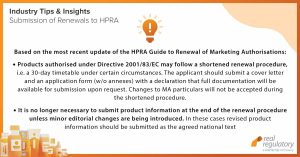February 2023
Real CMC Tips and Insights
Since the beginning of July 2020, we have published weekly Regulatory tips and insights from our Regulatory experts on our Real Regulatory LinkedIn page, as a service to our followers. The tips we published in February 2023 are collected here, for convenience. Make sure you follow Real Regulatory Ltd and Real CMC for regulatory news, reports and hints.
Reporting organic impurity content
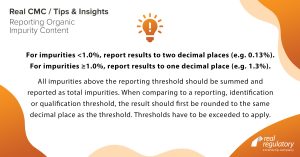
Ph. Eur. status in Europe
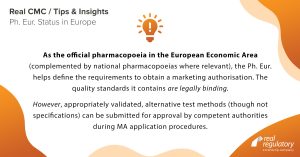
Ph. Eur. status in Britain
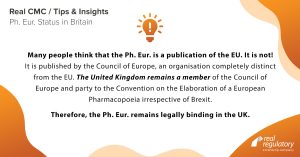
Checking CEPs
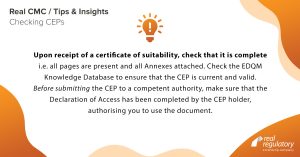
February 2023
Real Regulatory Tips and Insights
Please find below a roundup of our weekly Regulatory Tips and Insights from our Regulatory experts on our Real Regulatory LinkedIn page. The tips we published in February 2023 are collected here, for convenience. Make sure you follow Real Regulatory Ltd and Real CMC for regulatory news, reports and hints.
Digital Application Dataset Integration (DADI) project – web-based variation form for human medicinal products launching in October 2022
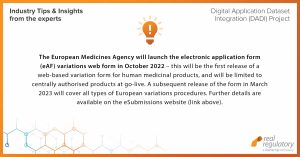
eTMF Quality Control and Audit Preparation Advice
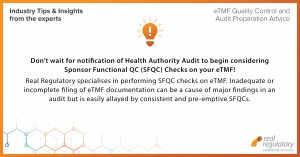
Industry Single Point of Contact (i-SPOC) Registration Required
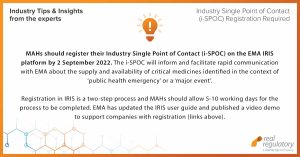
January 2023
Real Regulatory Tips and Insights
Please find below a roundup of our weekly Regulatory Tips and Insights from our Regulatory experts on our Real Regulatory LinkedIn page. The tips we published in January 2023 are collected here, for convenience. Make sure you follow Real Regulatory Ltd and Real CMC for regulatory news, reports and hints.
Importing investigational medicinal products (IMPs) into Great Britain from an approved country – end of transition period
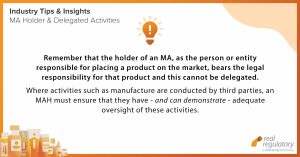
IRIS-Scientific Advice
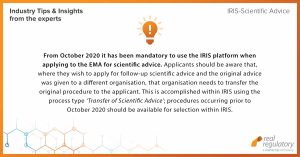
Transferring a Research Product Identifier (RPI) in IRIS
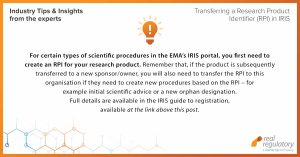
January 2023
Real CMC Tips and Insights
Since the beginning of July 2020, we have published weekly Regulatory tips and insights from our Regulatory experts on our Real Regulatory LinkedIn page, as a service to our followers. The tips we published in January 2023 are collected here, for convenience. Make sure you follow Real Regulatory Ltd and Real CMC for regulatory news, reports and hints.
Reporting impurities
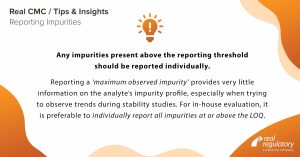
Dissolution profiling of biobatches
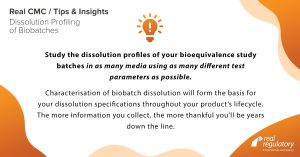
Specifications in the Dossier
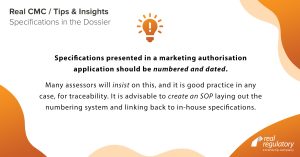
Polymorphism
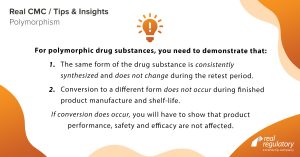
December 2022
Real Regulatory Tips and Insights
Please find below a roundup of our weekly Regulatory Tips and Insights from our Regulatory experts on our Real Regulatory LinkedIn page. The tips we published in December 2022 are collected here, for convenience. Make sure you follow Real Regulatory Ltd and Real CMC for regulatory news, reports and hints.
MA Holder & Delegated Activities

Questions & Commitments from Prior Submissions
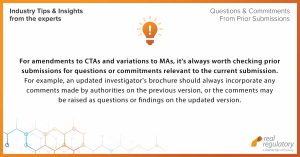
EMA QRD Guidance Documents
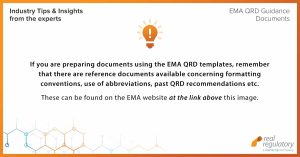
EMA Christmas Closure
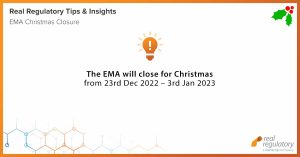
December 2022
Real CMC Tips and Insights
Since the beginning of July 2020, we have published weekly Regulatory tips and insights from our Regulatory experts on our Real Regulatory LinkedIn page, as a service to our followers. The tips we published in December 2022 are collected here, for convenience. Make sure you follow Real Regulatory Ltd and Real CMC for regulatory news, reports and hints.
SOPs in the Dossier
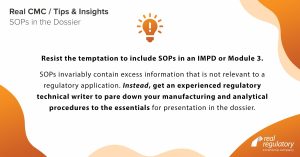
Mass Balance
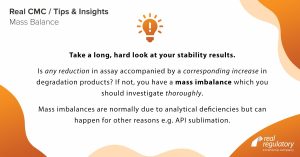
Reviewing an IMPD or Module 3
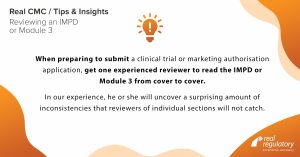
November 2022
Real CMC Tips and Insights
Since the beginning of July 2020, we have published weekly Regulatory tips and insights from our Regulatory experts on our Real Regulatory LinkedIn page, as a service to our followers. The tips we published in November 2022 are collected here, for convenience. Make sure you follow Real Regulatory Ltd and Real CMC for regulatory news, reports and hints.
Updating a QOS
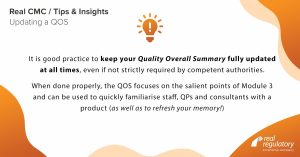
Compatibility
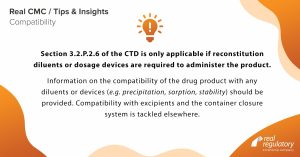
Reduced testing of starting materials
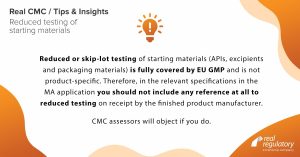
Finished product assay limits
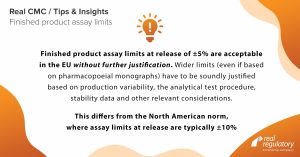
Ingredients in the eAF
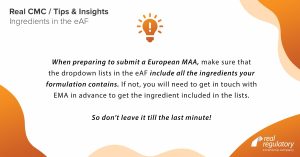
November 2022
Real Regulatory Tips and Insights
Please find below a roundup of our weekly Regulatory Tips and Insights from our Regulatory experts on our Real Regulatory LinkedIn page. The tips we published in November 2022 are collected here, for convenience. Make sure you follow Real Regulatory Ltd and Real CMC for regulatory news, reports and hints.
Clinical study reports and the ICH template
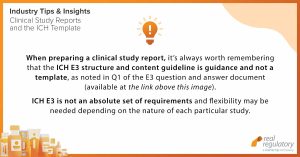
EMA guidance on CSR signatures and appendices
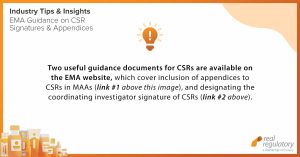
Clinical Trial Comparators
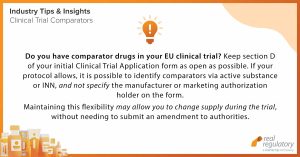
Clinical Trials: Planning for EU sites
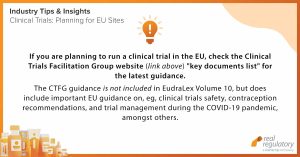
Otober 2022
Real CMC Tips and Insights
Since the beginning of July 2020, we have published weekly Regulatory tips and insights from our Regulatory experts on our Real Regulatory LinkedIn page, as a service to our followers. The tips we published in October 2022 are collected here, for convenience. Make sure you follow Real Regulatory Ltd and Real CMC for regulatory news, reports and hints.
Acceptance Criteria for Microbiological Quality
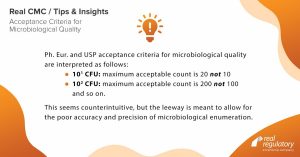
EPCRS
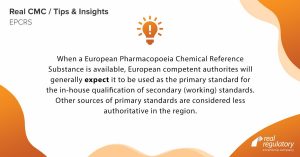
Structuring Module 3
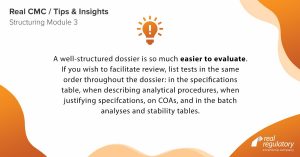
October 2022
Real Regulatory Tips and Insights
Please find below a roundup of our weekly Regulatory Tips and Insights from our Regulatory experts on our Real Regulatory LinkedIn page. The tips we published in October 2022 are collected here, for convenience. Make sure you follow Real Regulatory Ltd and Real CMC for regulatory news, reports and hints.
Clinical Trials: Substantial Amendments
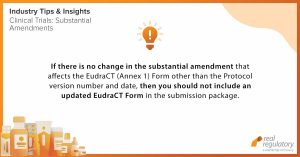
eVariation eApplication Forms
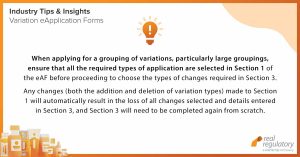
Clinical studies and sponsor responsibilities
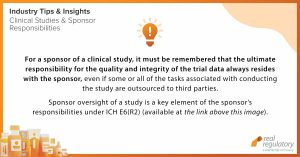
Submission of renewals to HPRA
